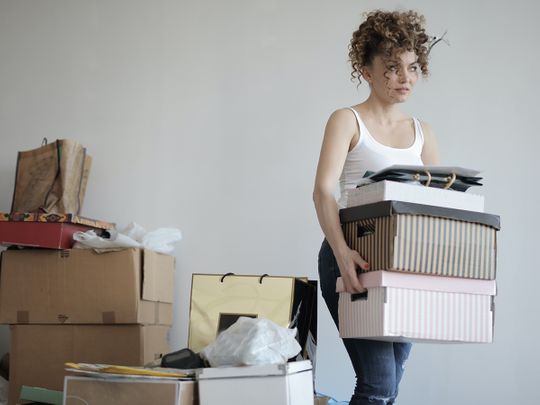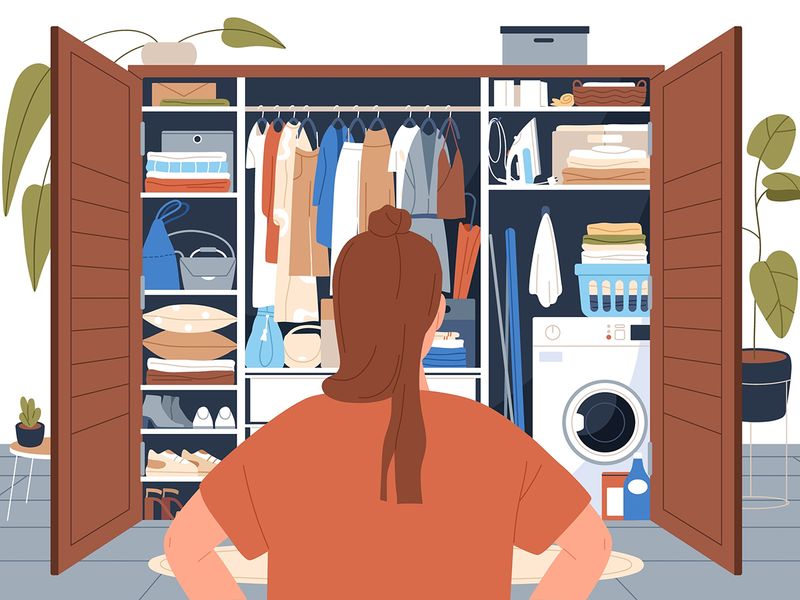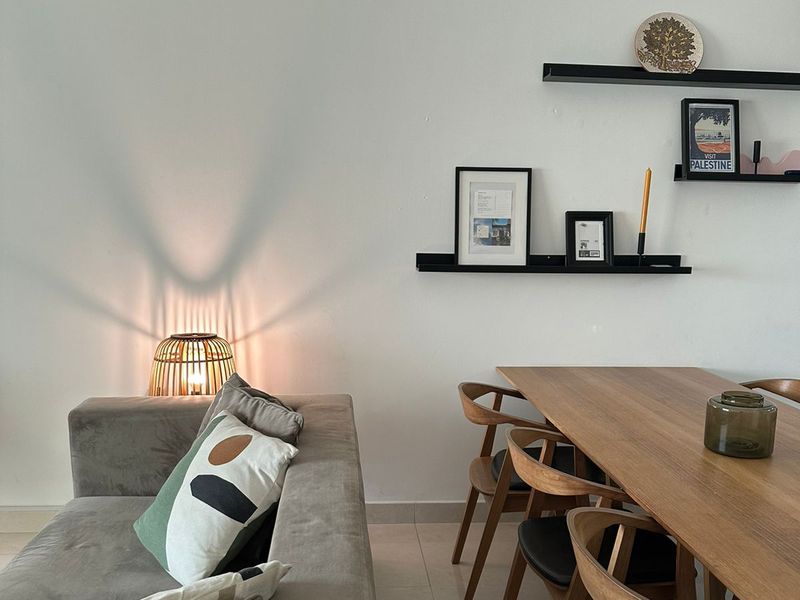
A loved one would like to inherit a few nice things from you. Not everything, least of all mess and clutter.
The term ‘Swedish Death Clean’ was coined by author Margareta Magnusson in her 2017 book, "The Gentle Art of Swedish Death Cleaning: How to Make Your Loved Ones’ Lives Easier and Your Life More Pleasant”. As she explains in her book, the exercise is called döstädning in Swedish. It is a combination of the word “dö” (which means death) and “standing”, which means cleaning.
That’s the essence of the Swedish ‘death clean’ system, a concept in Sweden and Scandinavian countries, where you eliminate items that are no longer of any use to you. At first, the idea might seem morbid as the ‘death clean’ means decluttering your home so that your loved ones won’t be burdened after you pass. It sounds dreary; but ironically it’s a rather efficient manner of keeping your home decluttered and tidy.
Magnusson, who has death-cleaned for several family members in her life, emphasises that it isn’t a ‘sad’ business; in fact, there’s some bittersweet joy and relief. The first time she came across death cleaning, was when she came to empty her parents house after her mother’s death.
As she was cleaning the house, she found handwritten notes attached to clothes and other items. These detailed what was to be done with everything. Some could be sent to charity, and some books could be returned to original owners. “Even if these small instructions were not addressed specifically to me, I felt consoled by them,” writes Magnusson. “I felt my mother was there for me. She had really done some of her death cleaning. I felt grateful, as it proved to be a good example for me how to take responsibility for your things and make it easier for loved ones after death,” she writes.
For Magnusson, a death clean is like the final act of consideration; a favour you do for your loved ones.
As Magnusson says, life is a lot more pleasant and comfortable when you get rid of the abundance.
How can you put the Swedish Death Clean into practice?

Death cleaning is not about dusting or mopping up, she emphasises. It is about a permanent form of organisation that makes your everyday life run more smoothly. She adds that you might find the process ‘enjoyable’, as it is intriguing to go through items and remember their value.
Don’t begin with photographs, letters and personal papers, warns Magnusson. If you start with them, you might get trapped in nostalgia and never proceed to the rest of the house. Begin with the attic or basement, as that is more likely to have unnecessary excess items. You might find old boxes of unwanted clothes that you never had the time to throw away, some frayed and worn out seasonal decorations or even school textbooks. As you have no sentimental attachment to any of these items; it’s easier to let go.
The Swedish Death Clean is done space by space, room by room, and item by item. She describes several spaces, categories and gives you recommendations for all the items. See what can be sold, donated, or just thrown into the trash.
Proceed to your closets and cupboards. Don’t worry about how long it will take; take your time to sort through all your clothes. Discard shirts, trousers, or skirts that are damaged or what you haven’t worn in ages. As you go through your entire house, you’ll discover items stored in different places, that you’ve kept for ‘just in case’ situations. Get rid of all the broken and burnt pots, pans, plates that you’ve never touched. They’re just adding to the mess.
Start small
When it comes to de-cluttering your garage, she tells you to ponder several questions. Have I used this item in the past year? If you cannot fix it, and if it costs too much money to fix it, then recycle it. Can I easily replace this item? If you can, then you can get rid of the old item. Create zones, areas in the garage. Have a zone just for your sports equipment. Have another zone for gardening tools and flower pots. Keep a zone for seasonal decorations. Get storage containers and label them clearly, she explains.
Shelina Jokhiya, a Dubai-based professional organiser who conducts frequent podcasts called ‘DeClutter Me podcast’ advises creating a plan, deciding which areas in the house are causing you the most pain. Break down each task into manageable chunks so that you don’t feel overwhelmed. It will help you stay focused. “Start small, and do a mini-clutter with each space, else you’ll feel it’s too much,” she says. “Do one small area for 10 to 15 minutes and move to the next. It will help you build momentum. Think about what looks good, what has purpose in your life, and what has not expired. Think whether you are actually going to use it.” Check even your medicine cabinet; evaluate what you actually need.

Do one small area for 10 to 15 minutes and move to the next. It will help you build momentum. Think about what looks good, what has purpose in your life, and what has not expired. Think whether you are actually going to use it.
‘Decluttering is a stress-reliever’
Japanese organising consultant and author Marie Kondo once said, “Keep the things close to your heart. Then take the plunge and discard all the rest. By doing this, you can reset your life and embark on a new lifestyle.” Her advice seemed relatively simple: The best way to choose what to keep in the house, was to hold each item and ask, “Does this spark joy?” If it doesn’t, or rather if it has outlived its purpose, then it’s time to discard it.
Dareen Al Sarraj, a Palestinian expat based in Dubai swears by this rule. She calls the process of decluttering her home a ‘liberating journey’. Talking about how and why she started her own Swedish Death Clean, the PR professional says, “I got introduced to decluttering in 2012. I had been diagnosed with anxiety disorder. I started looking for ways to overcome anxiety,” she says. She did research and read books on how anxiety is caused by lifestyle. “I read about how anxiety is about holding on to things and not letting go,” she adds.

Sarraj says she took steps to clear out her home. “Now I use exactly what I need,” she says. She reorganised her wardrobe, donated clothes to charity, and threw out unnecessary things, be it clothes, shoes and big pieces of furniture. It wasn’t an easy process, she says; it takes time and effort as it is a shift in the mindset.
Passionate about interior designing, Al Sarraj decided to apply this logic to her own home. “I used to look for ways to make my home look better. I started reading about Marie Kondo and I found it liberating,” she says. “When we moved houses, there was so much stuff to deal with. I realised that I had to let go of things. I didn’t even know about half the stuff I had.”

Every aspect of my life was decluttered. This helped me with my journey of anxiety. It changed my mindset, as I just learnt to live in the moment. I don’t think about the past. You don’t need the past, and neither do you know about the future. Focus on the present. Why do we need this clutter of emotions?
She adds that she feels ‘so much lighter’ now. “I’m not heavy now.”
Decluttering is more than just clearing out spaces and closets, says Al Sarraj. This process changed her as a person, as she applied it to her own life. She was able to weed out the unnecessary emotions, and friendships in her life. “Every aspect of my life was decluttered,” says Al Sarraj, who began her own social media pages My Kind of Space that emphasises the importance of letting go. “This helped me with my journey of anxiety. It changed my mindset, as I just learnt to live in the moment. I don’t think about the past. You don’t need the past, and neither do you know about the future. Focus on the present. Why do we need this clutter of emotions?”
Why you should do the Swedish Death Clean
Less stress
For starters, you might feel less overwhelmed and stressed. There have been several studies discussing the link between clutter and unproductivity. In a 2009 study published in the American journal Personality and Social Psychology Bulletin, 60 women were analysed. Those who came from cluttered, unfinished environments, were found to have higher levels of the stress hormone cortisol and deteriorating moods, as compared to women who described their homes as restorative.

You’ll be happier
More focus
“If you pare down, the argument is that you can better focus on the really important things in life,” Rosellina Ferraro, PhD, Associate Professor of Marketing had told NBC News in 2017. “So when you get rid of the excess stuff surrounding you, you can better identify on those things that are really important to you and what brings you pleasure in your life,” she had said. De-cluttering and streamlining your home helps to control the chaos in our daily lives.
Another study published in 2011 showed that clutter made it harder for the brain to focus on a specific task. This happens because the visual cortex gets distracted by the irrelevant information you absorb.
You have higher chances of productivity, if your house is decluttered.
Coping with your own mortality
Death itself, is a painful conversation. “We must all talk about death. If it’s too hard to address, then death cleaning can be a way to start the conversation,” Magnusson wrote in her book. Swedish Death Clean can also help you realise how you want to be remembered, and how others will see you after your death. Start at a relatively young age, so that you don’t have problems when older.
(First published on May 30, 2023)









